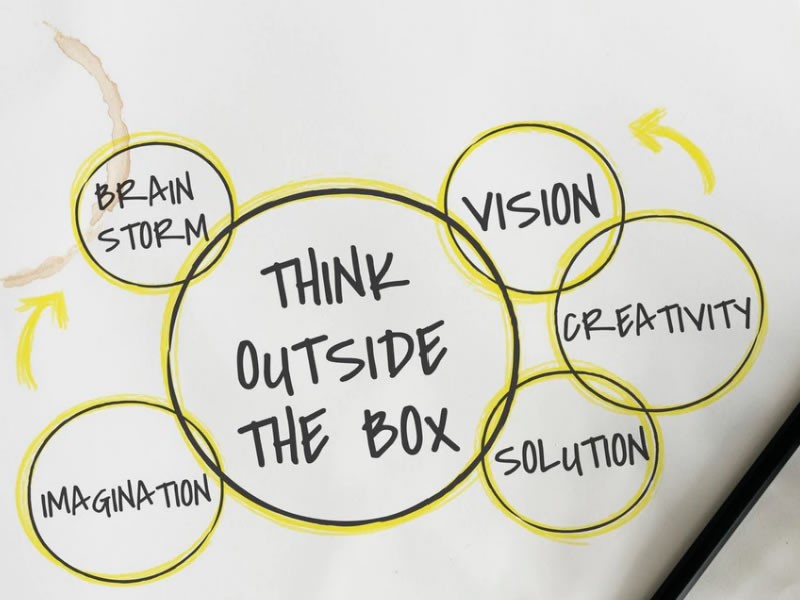Insight Blog
Agility’s perspectives on transforming the employee's experience throughout remote transformation using connected enterprise tools.
7 minutes reading time
(1394 words)
Understanding The Model Office Environment – UPDATED 2022
In order to get early feedback on the new system, the Model Office involves the key individuals who will be engaged in the transition early on, allowing for early feedback on the new system's design.
In the wake of large-scale initiatives or programs, have you ever wondered why certain companies seem to easily shift to new methods of working while other organizations seem to struggle and find the experience disruptive? The Model Office may be the answer.
Model Office
A new suggested solution's people, process, and technology are all brought together in a Model Office. Using a simulated work environment, it repeatedly assesses the solution's utility and efficacy against real-world circumstances.
To ensure a smooth development process, relevant stakeholders are consulted at an early stage, allowing them to provide comments. It's also a terrific approach to get buy-in from everyone involved because you can show the solution's advantages early on. If you're intrigued, you might also be interested in similar growth strategies outlined by Jessica Jackley or Cristy Celaya.
There are assumptions that are found and tested so that customers may have the best possible experience. In this way, we can verify that the new solution meets all of our functional and quality requirements. Early information transfer to business teams reduces the learning curve for employees who will be working with the solution. Early identification of possible gaps in process, people, and technology promotes iterative design for the best method to address these gaps.
It promotes acceptance of the new solution and creates advocates for it, making it easier to implement.
What is a Model Office?
When we think about testing, we usually think of testing the outputs of specific goods. We also consider testing the end-to-end system by combining these deliverables. One might easily overlook that these deliverables have a substantial influence on working methods, tools, and procedures employed within a company. This problem may be solved with the use of a Model Office.
As a functional prototype, the Model Office is the closest thing we have to a true representation of the actual production environment. We may test the suggested solution's utility and efficacy using the Model Office. When the project or program is finished, the systems and processes will be used by key Operations professionals who participated in the Model Office.
In order to get early feedback on the new system, the Model Office involves the key individuals who will be engaged in the transition early on, allowing for early feedback on the new system's design. As a result, it's a terrific method to get buy-in from everyone involved, as we can show them the advantages of the new system right away and incorporate their feedback into the solution as early as possible. The ability to predict problems and handle them before they exist is also a benefit.
Model Office Environment
Have you ever thought about why some businesses seem to easily adapt to new working methods when significant projects or programs are completed, while others struggle and find the experience quite disruptive? This is a common question. The Model Office may be the best place to look for the solution.
A new suggested solution's people, process, and technology are all brought together in a Model Office. Using a simulated work environment, it repeatedly assesses the solution's utility and efficacy against real-world circumstances.
To ensure a smooth development process, relevant stakeholders are consulted at an early stage, allowing them to provide comments. It's also a terrific approach to get buy-in from everyone involved because you can show the solution's advantages early on.
Model Office phases
To ensure the Model Office is a success, it must be operated with very specific goals for the life of the project or program.
The Preparation Phase
During the beginning of the execution of the program, the Model Office Planning Phase takes place. The goal of this phase is to get the Model Office up and running so that it can run smoothly throughout the program. Typically, this stage includes the following steps:
- 1)Determine who will be in charge of the Model Office.
- 2)Model Office sessions should be scheduled in advance. The Model Office workshops must be aligned with key outcomes if you want to achieve this goal. Once a month, for example, R&D exposes new features to the public. If this is a recurring event, then a monthly meeting would be ideal.
- 3)The Model Office has to have a working atmosphere. Make that a testing system exists and has enough data in it to accurately represent real-world use, if necessary.
- 4)Prioritize a list of proposed changes and a list of the pros and cons of the new system compared to any existing systems that will be presented during the Model Office sessions.
Model Office in its early stages
The early stages of your project or program are unlikely to have any deliverables that can be evaluated. You can still operate the Model Office despite this. Business Scenario Walkthroughs can be conducted at this level using whatever is available (wireframes, initial notes on a new business process).
The goal of these BSW's is to walk through the business processes even when the software or hardware doesn't yet exist to test the intended business processes to ensure they are operational. Because no software or hardware exists players should be requested to role play, utilizing props or merely pieces of paper rather than genuine systems.
Mid-stage Model Office
This stage starts when the first genuine deliverable is available to test. At this level, in addition to completing Business Scenario Walkthroughs, we start carrying out Business Simulations. Real-world tasks are performed on the delivered systems in order to model as closely as possible the duties that will occur once the systems have been turned over to the Operations team. This is known as "Business Simulation." As much as feasible we are striving to recreate the full business process end-to-end.
Only a minority of the final systems are likely to be accessible at this point in the project. However, in addition to the systems delivered at this point, fresh wire-frames or designs will be ready for those components of systems being supplied next, and we should continue to undertake Business Scenario Walkthroughs on these things.
Late-stage of the Model Office
As soon as we no longer need to do Business Scenario Walkthroughs, we may move into the late-stage model office. The objective of this phase is twofold:
All systems provided must be approved as suitable for use in operations.
As a second goal, participants in the Model Office should go out into the company and teach and prepare colleagues to use the new systems that are being introduced.
Finally completing Operations and training plans at the end of the mid-stage Model Office is a smart idea. Final sign-off signifies that the systems being handed over to the Operations team have been thoroughly tested and that all of the appropriate personnel have been trained on how to utilize them.
Model Office Testing
In a pre-production test environment, Model Office Testing (MOT) is used to imitate real-world application usage as closely as feasible. A sequence of timed, realistic situations puts users and administrators of both front and back-office systems to the test.
Using MOT, organizations may smoothly transition large-scale change programs and demonstrate that a new system is feasible with each business department understanding their operational responsibilities in advance of a production setting. Data migration and large-scale transformation initiatives benefit greatly from the usage of MOT.
Model Office Testing Vs UAT
When a software solution is ready for use, the company owners or clients of the product will do user acceptance testing (UAT) to make sure that it meets their needs. Several recurring challenges may arise in the later phases, making the assistance of seasoned professionals important.
Customers and solution providers might get into a lot of arguments when the requirements aren't well thought out. Due to their full-time jobs, many business teams are unable to devote sufficient time to UAT due to their lack of expertise in software testing. Testing data and environments might be a challenge for acceptance test resources.
Categories
Blog
(2576)
Business Management
(315)
Employee Engagement
(204)
Digital Transformation
(171)
Intranets
(119)
Growth
(116)
Remote Work
(61)
Sales
(48)
Collaboration
(37)
Culture
(29)
Project management
(29)
Customer Experience
(26)
Knowledge Management
(21)
Leadership
(20)
Comparisons
(5)
Ready to learn more? 👍
One platform to optimize, manage and track all of your teams. Your new digital workplace is a click away. 🚀
Free for 14 days, no credit card required.

















